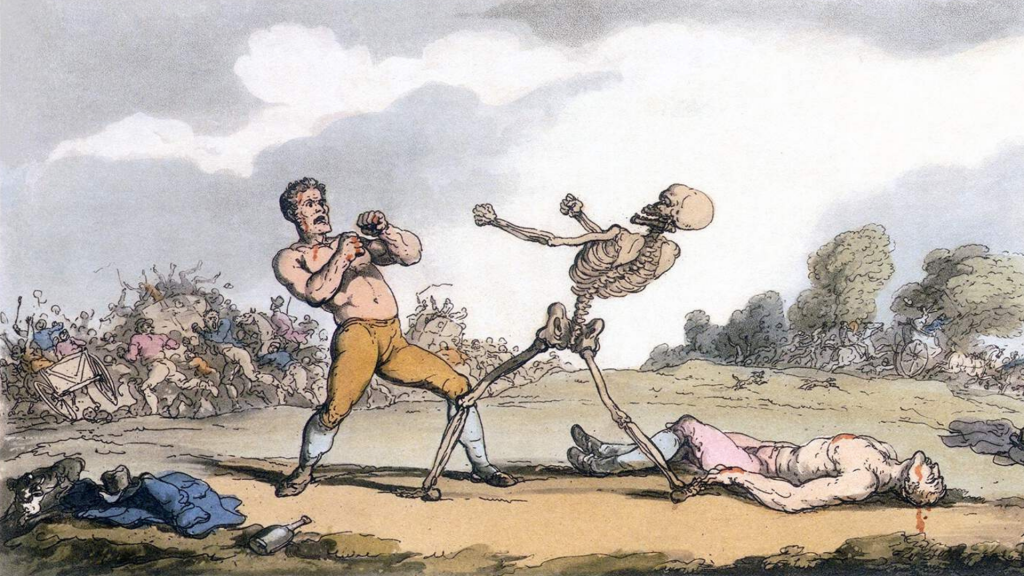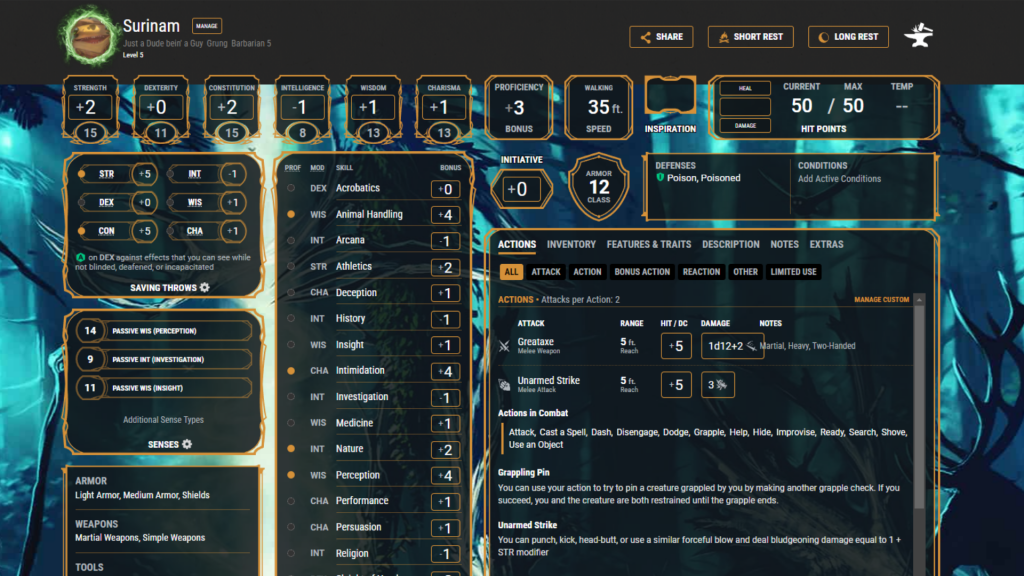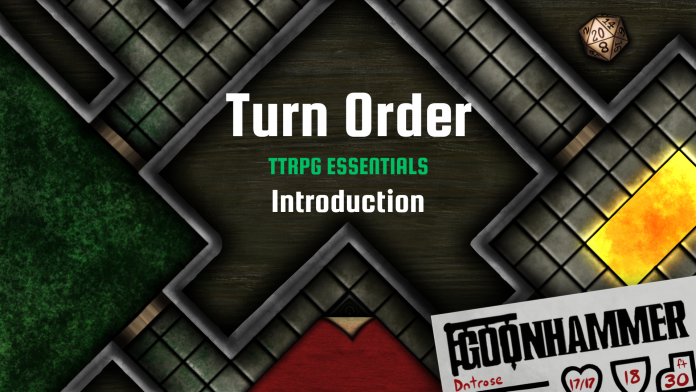We talk a lot about wargames here on Goonhammer dot com, but did you know that there’s a whole other hobby that originated from wargames back in the 1960’s? Emerging from the military simulation community, the first ever roleplaying game was Braunstein; an experimental game designed by David Wesely to simulate wargaming from the perspective of individual figures in a fictional German town. Unexpectedly, the twenty(!!) players that showed up for the experience began using their characters to speak with one another and explore the town. The first instance of roleplay justified PvP happened because of this, as two players challenged each other to a sudden duel. At the time, the rules were improvised, but the experience nonetheless lit a spark in the minds of a small group of wargamers, which would eventually lead us to the very first edition of Dungeons and Dragons, and every single tabletop roleplaying (TTRPG) game that followed.
This has the funny side effect of letting one say that you were able to romance Karlach in 2024’s Baldur’s Gate 3 because sixty years earlier, two guys in a Napoleonic wargame decided it was on sight.

This article is intended to introduce you to some of the more basic concepts surrounding tabletop roleplaying games, including some simple terminology and definitions to get you up to speed. It’s by no means exhaustive, but it is intended as an invitation to further explore this wonderful hobby. If you have a friend that’s interested, but doesn’t know a DM from a d20, this is for them.
Cultural penetration be damned, sometimes it’s just nice if somebody lays it all out, right?
What is a TTRPG?
A tabletop roleplaying game is one wherein the players explore individual characters, their choices, their lives, and their struggles. The fantasy of tabletop roleplaying games is that of becoming; briefly inhabiting a character for a few hours at a time and experiencing an interactive story from a “boots on the ground,” first person POV. It’s a shared storytelling medium, where everyone at the table gets to collaboratively craft the narrative as they experience it. It’s also a game wherein you’ll be rolling a number of various dice to determine the outcome of uncertain scenarios. It’s a medium that can allow for entirely unique cinematic experiences, with a degree of interactivity that trumps most others. One of the most popular games, if not the most popular, is Dungeons & Dragons.
What is Dungeons & Dragons?
Dungeons & Dragons (D&D) is a fantasy TTRPG originally designed by Gary Gygax and Dave Arneson, focusing on small diverse parties of characters getting up to adventures and various hijinks. It’s had multiple editions over the years, each with a differing focus on various elements of design, and each with their own ardent fans and detractors. It’s also been adapted through various mediums such as television, cinema, comics, books, video games, etc. The most recent adaptation, and likely one of the reasons you’re reading this, is Baldur’s Gate 3.
The Basics
Everybody at the table is divided into two camps. “Players;” those inhabiting individual characters, and the “Dungeon Master” (DM); who inhabits the world around those characters. Despite this divide, both groups exist within in a shared state of constant collaboration and improvisation, though the actual balance may shake out differently table to table. You roll dice to determine the outcome of uncertain scenarios, such as if your character is capable of charming that pesky guard, if you hit that guard in combat, or if you continue to bleed out on the cobblestones after getting dropped for accidentally picking the wrong fight. In D&D, d20s are the predominant die utilized, but other systems utilize dice such as d6s and d10s.
Some TTRPGs utilize physical maps and miniatures (both 2D and 3D) in a manner similar to wargaming, whilst others operate in what’s known as the Theatre of the Mind, wherein the space of play is a conceptual one visualized by everyone at the table. Both have their strengths and weaknesses, and many systems utilize both options on a scene-by-scene basis. For example, a system might utilize maps and minis for combat exclusively and rely on theatre of the mind for any scenes outside of that one particular scenario.
In 2024, most tabletop roleplaying games have tools (either created by the designers, contractors, or fans) that make online play a seamless experience. VTT’s, or Virtual Tabletops, serve as a way to both access quick rules reference, and easily share information through voice or text chat as you would across a dining room table. D&D is by far and away one of the best represented in the VTT space, as there exists both a companion app (D&D Beyond) with access to both rules and digital character creation tools, and nearly every available VTT platform has specialized tools for the game.

What’s a Player?
A Player is everyone at the table that’s controlling an individual player character (PC), whether rolled up using the character creation rules, or pre-built. If we’re thinking in terms of BG3, any origin character is a PC. They have unique hopes, dreams, skills, and experiences, and the player expresses this through their choices within the game, and the way in which they interact with other characters. The PC’s stats, skills, abilities, and other qualities are all recorded upon what’s known as a character sheet.
What’s a Dungeon Master?
Also known as a Game Master (GM), and Storyteller (ST), The Dungeon Master is the individual who crafts and presents the world that the other players will inhabit. Every single non player character falls under the purview of the DM, enemy or ally alike, and so they roll dice on their behalf. The DM also usually knows the lion’s share of the rules, both to aid the players who may not, and to guide the design of encounters within the world. Again, if BG3, the engine itself would be the DM.
Unlike the player, the DM will have access to a massive breadth of stat blocks (both custom and pre-built) to represent everything in the world. Not all DM’s are alike, as some prefer their worlds to be more improvised, others will spend hours at a time crafting individual cities, and most do a fun mix of the two. Ultimately, as is the case with the player’s relationship to their character, the DM decides what style best suits them to explore the world they plan on placing the PC’s within.
Why are you telling me this?
Well, because it’s a big hobby, and one that’s constantly improved by new people exploring it! It’s also more accessible now than ever before, as a large number of the bigger TTRPG systems have invested in player-forward software, and smaller systems are being designed from jump with accessibility in mind. Regardless of your favorite genre, style, tone, or topic, there’s a TTRPG that’s sure to appeal to you and your table’s personal tastes.

Alternatively, if your interest is more into the roleplaying aspect of the hobby, there are great systems for that as well. Systems like Kids on Bikes, Blades in the Dark, and Wanderhome all give you wonderful opportunities to explore all the weird parts of the world outside of combat. Each of these systems excel at encouraging you to really dig deep into your characters and their relationships with both each other and the world around them.
For the sickos among you that want a mix of both, you’ve also got some truly great options. Mork Borg, FIST, and Gubat Banwa (Yes, I can list it twice, it’s that good) are each excellent examples of this, giving you a unique mix of equally visceral combat and roleplay. All of these are the sort of systems that blur the divide between what are typically two neat halves and encourage you to blur them further!
If you read this and want to know more, check back soon! This is intended to be the introduction to a series of articles covering a breadth of introductory topics within the TTRPG Hobby.
UP NEXT: BUILDING A TABLE
Have any questions or feedback? Drop us a note in the comments below or email us at contact@goonhammer.com.


